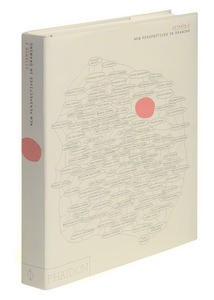An essay by Mark Godfrey for Vitamin D: New Perspectives in Drawing, published by Phaidon, 2006
Simon Faithfull pursues what might at first seem an extremely traditional practice of drawing, but does so with a contemporary technological support and means of dissemination. He makes landscape and still life sketches en plein air but makes them on a palm pilot. Most drawings are made in series either at a particular site or on a journey. Completed sketches are sent out via email to various user groups, webcast in art institutions, or simply placed on his website. The confrontation of the traditional model of drawing and a contemporary technology is mutually enhancing: the outdoor sketch is brought up-to-date as Faithfull literally relays images to audiences on a day to day basis, and the palm-pilot is redeemed, given a role beyond its usual purpose as the businessman’s memo-making device. But the confrontation is also mutually undermining: through their combination, both the traditional idea of sketching and the palm-pilot drawing seem absurd. The combination also places some pressure on traditional ideas of drawing: as a mark, this is no longer direct, but doubly mediated, first by the mechanism of the palm pilot, and next by the mechanism of the secondary technology (internet site, etc); this mediation also means that the drawing loses its status as an evidentiary mark: there is no proof that Faithful saw the thing that the drawing records.
As a drawing device, the palm pilot has a limited facility but produces complicated results. Drawing mainly means making lines, and however fluid the motion of Faithfull’s stylus against the screen, these appear pixallated and jagged. As a whole, the drawings have a stuttering, awkward quality, childlike, but oddly divorced from childlike subject matter. Some drawings are very complex, some quite spare, but all seem more casual than they would have been to make. The lines can either appear black against a white ground, or the other way round, which means that in a series made at night and day, no twilight tones can be registered. There is little shading in the drawings, and when this does appear, it is not as cross hatching or rubbing, but as one of a limited number of preset ‘fill-in’ options. To reproduce the movement of the scene before him as he drew, Faithfull sometimes uses the basic animating devices of his apparatus. The rippling surface of a canal is replicated by moving horizontal dashes (4 Postcards from Venice, 2003), the flashing lights of a fairground by shifting crosses (Dreamland, 2003) but none of these animations is particularly dramatic. In fact, set against the fetishistic uses of technology in other recent art practices, Faithfull’s work seems to dramatise the inadequacy of a new media to render shifts of light and matter, the basic aspects of perception. Rather than the courting the technological sublime, Faithfull emphasises the inability of digital media to deliver the spectacular.
Faithfull has made series of palm pilot drawings in a range of locations. Sometimes, he draws the kind of banal suburban non-sites that once fascinated artists like Robert Smithson and Dan Graham. Lee Navigation (2000) is a long horizontal drawing charting the course of the River Lee from its mouth to its source ‘beneath a tower block in Luton’, and 13 (2004) was a series of 13 drawings made over 13 days along the A13, a road which stretches from east London to the Essex coast. The spareness of the first drawing captures the drabness of the landscape, and even though there is not much detail in 13, you still get a sense of tawdry British highstreets. Four postcards from Venice (2003) was a project completed during the Biennale, and in this romantic setting, the effect of the palm-pilot is quite different. Faithfull’s drawings reduce classical depictions of the city – from Carpaccio to Canaletto – to a few scattered lines, but in so doing, they remind us how little information we need to conjure clichéd Venetian picture postcard images in our minds.
Antarctic Dispatches (2004-05) is Faithfull’s most ambitious drawing project to date, a series of 49 drawings made whilst accompanying a team of scientists from the British Antarctic Survey. As with many of his projects, considerable time must have been spent determining what to draw and how to represent a day: sometimes Faithfull chose to send a mundane sketch of a card game, or a hasty profile of one of the researchers, thereby reminding his distant audience that travel is as much about mindless waiting as epic drama. Particular attention was paid to entropic sites – abandoned whaling stations, and the still un-cleared mine fields of the Falklands. But then there were the drawings of the icebergs of the Southern Ocean and the cliffs of Antarctica (No. 22,No. 29). Remarkably, their scanty detail is in inverse proportion to their effect. Precisely because these scenes were not privileged in the overall series, precisely because the visual information was so spare, receiving the emails one could imagine the magnitude of the scene before the artist as he inscribed an impoverished representation on the palm-pilot’s screen.
http://de.phaidon.com/store/art/vitamin-d-9780714845456/
